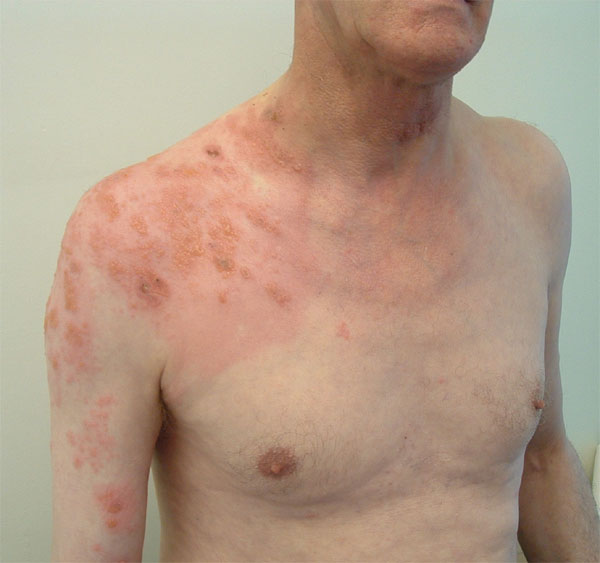| Medical Finals contents: Welcome Finals advice Written exams Clinical revision X-Rays Mock final OSCE's |  |
Medical Finals contents: Monthly quiz PDA's Links Credits Your comments Who are we? |
Question 1 | |||||
|
As a student on the paediatric ward you are asked to auscultate a one year old child's praecordium.
You hear two heart sounds and a continuous grade 2 murmur sited below the left clavicle. What is the most likely cardiac defect? | |||||
| |||||
|
Answer: (c) Patent ductus arteriosus (PDA)
The ductus arteriosus (DA) acts as a pulmonary circulation bypass during intrauterine life, returning oxygenated blood from the placental venous return to the systemic circulation. The DA should normally close within the first few hours or days after delivery, however, it can remain patent when it is termed a patent ductus arteriosus (PDA). The pulmonary pressure is lower than systemic pressure throughout the cardiac cycle. This pressure difference gives rise to the continuous murmur that is heard beneath the left clavicle, as blood crosses the patent ductus arteriosis. The murmur may be confused with the innocent murmur of a venous hum that can also be of the same grade and location. The venous hum can be distinguished from the murmur of a PDA by its disappearance on lying flat or on occlusion of the neck veins. These manoeuvres inhibit flow from the neck veins therefore abolishing the turbulent venous flow that causes the murmur. Congenital heart disease can be classified depending on the physiological consequences of the abnormality, and whether or not it gives rise to central cyanosis. In cyanotic congenital heart disease, hypoxia can be attributed to either inadequate pulmonary circulation or inappropriate mixing of pulmonary and systemic venous return. The presentation of congenital heart disease varies in clinical features and timing. A cardiac anomaly may be detected on antenatal ultrasound scan or on clinical examination. The disease may also present with heart failure or shock. In neonates and infants, heart failure presents with the classic triad of tachypnoea, tachycardia and hepatomegaly. Shock will occur if the systemic circulation that has relied on a PDA is cut of when the duct closes early. This situation is fatal unless the duct is kept patent with a prostaglandin infusion.
|
Question 2 | |||||
|
A 76 year old gentleman presents to his GP with a painful rash over his right shoulder.
Initally he had noticed a burning sensation over his shoulder, but within the last 48 hours a vesicular rash developed.  How would you treat this condition? | |||||
| |||||
|
Answer: (c) An anti-viral agent
This patient has shingles over his right C4/5 dermatones. Shingles is a reactivation of latent varicella zoster (chickenpox) virus in the posterior root ganglion. Although antiviral agents can be used, they must be started at the onset of symptoms to be of clinical benefit. Once the rash has been present for more than 48 hours, treatment with anti-viral agents will be of reduced value. Shingles is contagious and may itself cause chickenpox. However, contact with a person with shingles or chickenpox cannot cause shingles. Neuropathic pain relieving medication (eg gabapentin) may be used for those patients who develop post-herpetic neuralgia. |
Question 3 | |||||
|
A five year old Asian boy presents with a two week history of being "off-form" with fever and lethargy. His parents also state that the skin on his hands have started to peel.
What important condition would you think of? | |||||
| |||||
|
Answer: (e) Kawasaki's disease
Fever and lethargy are presenting complaints for many childhood illnesses, but a child with persistent fever warrants special consideration. Kawasaki's Disease is a vasculitis that affects medium sized blood vessels. Importantly it may involve the coronary vessels giving rise to aneurysms. The aetiology is unknown, but an infective trigger is suspected. Epidemiology of the disease reveals interesting secular trends with peaks in the winter and early spring and a largely Japanese ethnic distribution. The disease is diagnosed if the following criteria are met (see box below:)
|
Question 4 | |||||
|
A 20 year old woman of 16 weeks gestation presents to your ward complaining of a 12 hour history of painful per vaginal (PV) bleeding with clots.
What is top of your initial differential diagnoses based on this presenting complaint? | |||||
| |||||
|
Answer: (b) Spontaneous abortion
Bleeding in pregnancy requires a tactful, sympathetic and meticulous approach to patient assessment and subsequent management. There are several important causes of genital tract bleeding in a pregnant woman which include ectopic and molar pregnancies. Spontaneous abortion is the leading diagnosis and can be classified according to the stage (see box below). Placental abruption, placenta previa and vasa previa are the main causes of antepartum haemorrhage, which is defined as bleeding from the genital tract after the 24th week of pregnancy.
|
Question 5 | |||||
|
A 29-year-old female presents to A&E with intoxication and reported ecstasy consumption following attendance at a rave.
She is responding to pain and on assessment of her airway you notice jaw clenching and noisy breathing. In addition to attempting manual manoeuvres, what airway adjunct would you choose to use next? | |||||
| |||||
|
Answer: (d) Nasopharyngeal airway
Airway management is a major priority in any acute medical emergency. In this case the patient's compromised airway is complicated by trismus, most likely due to the ecstasy intake. Manual manouveres are not adequate to open and maintain this patient's airway. The use of an oropharyngeal airway requires that the patient is adequately obtunded to tolerate the adjunct and has adeqaute mouth opening to insert it - again not a possibility in this case. Nasopharyngeal airways (NPA) can be inserted in a semi-concious patient, bypassing the oral route. There are many teaching methods on the correct sizing of a NPA: as a general rule an average male will take a size 7 and average female a size 6. Classical teaching is against the use of a NPA in patients with a basal skull fracture.
|